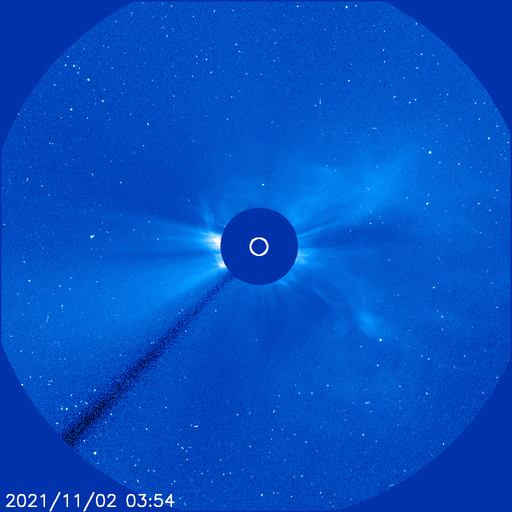
UPDATE NOVEMBER 4, 2021, AT 19:30 UTC (3:30 PM EDT): Aurora!! There are a phenomenal number of fantastic images people from around the world have been sharing. Here is one shared on Spaceweather.com by Markus Varik in Tromsø, Norway.
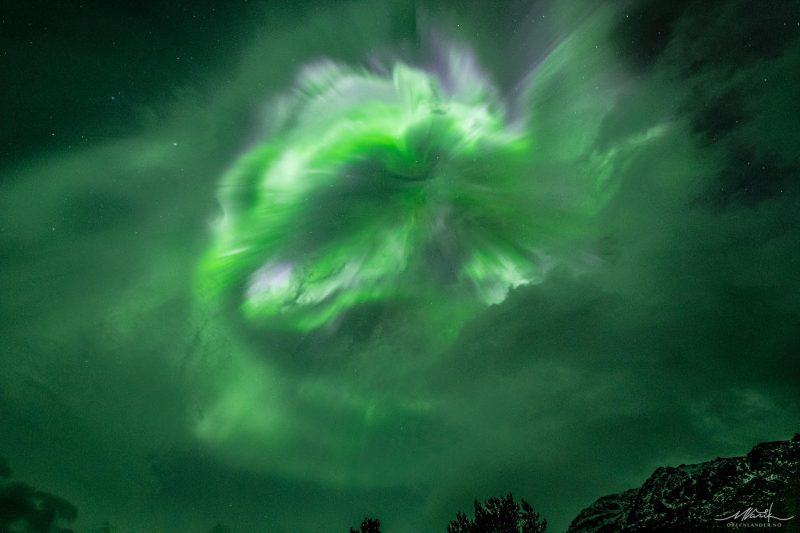
UPDATE NOVEMBER 4, 2021, AT 12:00 UTC (8:00 AM EDT): What a great show! A G3 storm (strong storm level) is still in progress and is predicted to stay near this level for the next 24 hours. Over the last 12 hours, the storm level has fluctuated between G3-G2-G1-G3 as can be seen in the NOAA Kp Index chart. G1 (minor) is Kp 5, G2 (moderate) is Kp 6, and G3 (strong) is Kp 7.
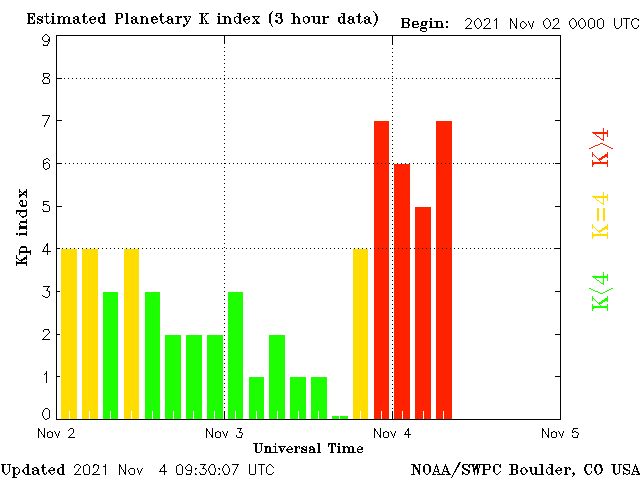
This activity has produced some amazing aurora especially closer to the polar region. The NOAA Ovation model is driven by solar wind measurements from the DISCOVR spacecraft. It gives a good indication of the true extent of the auroral oval on a timescale of 30-90 minutes. It does not provide detailed information at specific locations but gives a good idea of where one can expect to see great aurora (assuming the skies are clear).

UPDATE NOVEMBER 4, 2021, AT 00:10 UTC (8:10 PM EDT, NOVEMBER 3): The geomagnetic storm level reached the G3 level (Strong Storm) at 23:59 UTC (7:59 PM EDT), on November 3, 2021.
UPDATE NOVEMBER 3, 2021 AT 22:20 UTC (6:20 PM EDT): The combined CME has arrived, slightly earlier than forecast. The CME from November 2 overtook the CME from November 1, and the combined event was first detected as a shock wave at 19:57 UTC (3:57 PM EDT) by the DSCOVR spacecraft using its solar wind monitor (DSCOVR is located 1 million miles – 1.6 million km – from Earth in the direction of the sun.) Then a strong compression of Earth’s magnetosphere due to this shock was detected at 21:29 UTC (5:29 PM EDT). This set off a G1 geomagnetic storm at 21:38 UTC (5:38 PM EDT) increasing to a G2 geomagnetic storm at 22:05 UTC (6:05 PM EDT). NOAA has issued a warning for a geomagnetic storm of G3 or greater!
Aurora happening right now! Loch Lomond @VisitScotland @BeingScots @StormHour @ScotsMagazine #Aurora #Scotland pic.twitter.com/WnXLe7Dy95
— john anderson (@john_a_photo) November 3, 2021
UPDATE NOVEMBER 3, 2021 AT 17:00 UTC (1 PM EDT): Computer modeling by the NOAA Space Weather Prediction Center now suggests that the CME from the November 2, 2021, solar flare will first strike Earth’s atmosphere at 06:00 UTC (2 a.m. EDT) on November 4. So geomagnetic storming – and possible low-latitude auroras – should begin around the first half of November 4. Moreover, the G1 geomagnetic storm has been updated to a G2.
Aurora alert on an increasingly active sun
Only days after the last coronal mass ejection (CME) from the surface of the sun, with resulting aurorae, it’s time for a new one! This bump-up in activity is expected as Solar Cycle 25 continues to ramp up. On November 2, 2021, a solar flare in the now-visible sunspot region called AR2891 launched another CME toward Earth. The culprit solar flare behind the CME is classified as an M1.7 flare. And the movie above shows the CME as it emerges from the surface of the sun like a halo. More about that below.
Researchers expect the incoming solar charged particles will interact with Earth’s magnetic field to cause category G2 geomagnetic storms and a subsequent increased display of aurorae, or northern lights.
Turns out this cloud of charged particles from the sun isn’t just an ordinary CME, but also a cannibal CME sweeping up older and slower CME’s in front of it. More about that below, too.
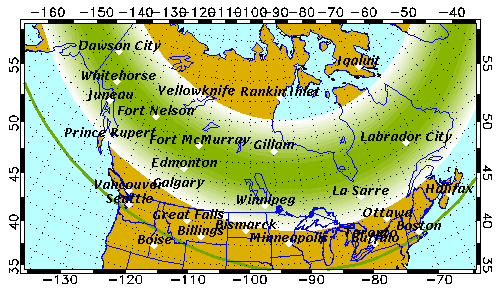
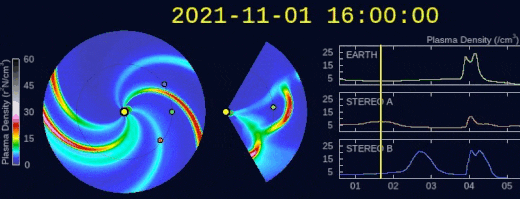
About these CMEs: Halos and cannibals
We mentioned the word “halo” above. This particular CME is considered a halo CME, because it appears as an expanding halo around the sun as we see it leaving the sun’s surface. Imagine you’re face to face with someone who blows a giant bubble of chewing gum the size of their head. The bubble frames their face in a halo from our point of view, because the bubble is aimed directly at us. In other words, this time, Earth is in the bullseye. Even though Earth will have traveled a bit in its orbit by the time the CME arrives a few days later, the CME is so much larger in extent that we will still be well within it.
And not only that, it is also a cannibal CME! A cannibal version of a CME is a CME that moves faster and thus able to sweep up and assimilate slower CMEs in front of them. Thus when they pile up on their way toward us, these combined CMEs contain strong magnetic fields and can spark even more impressive geomagnetic storms.
Spaceweather.com reported that:
… the slower CMEs, in this case, were hurled into space on November 1 and 2 by departing sunspot AR2887.
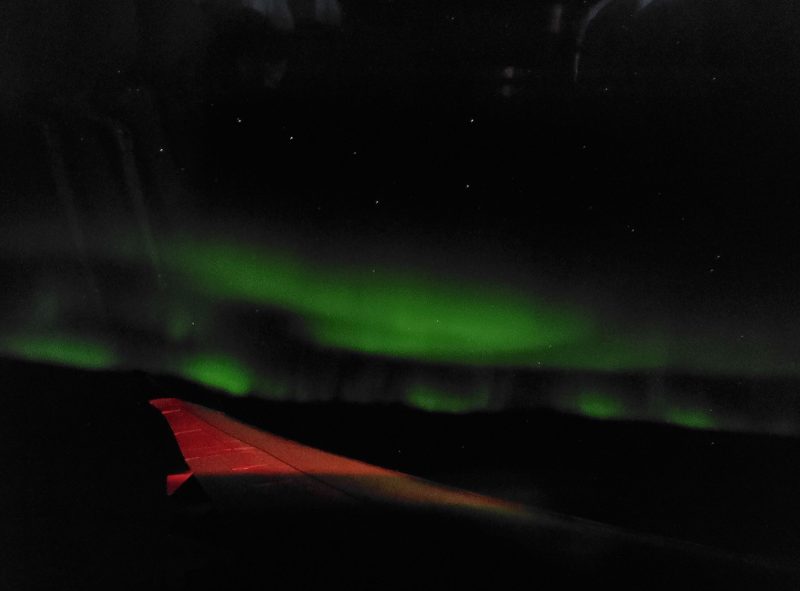
Bottom line: If you’re at a high latitude, keep your eyes open for aurorae in the next few days. The sun sent out a halo coronal mass ejection on November 2, 2021, due to arrive at Earth early in the day on November 4, with aurorae commencing that day.











